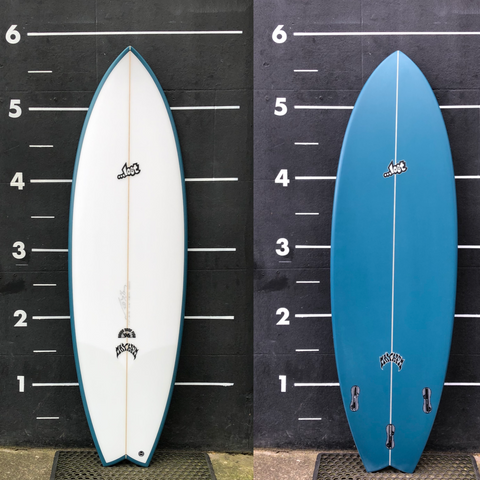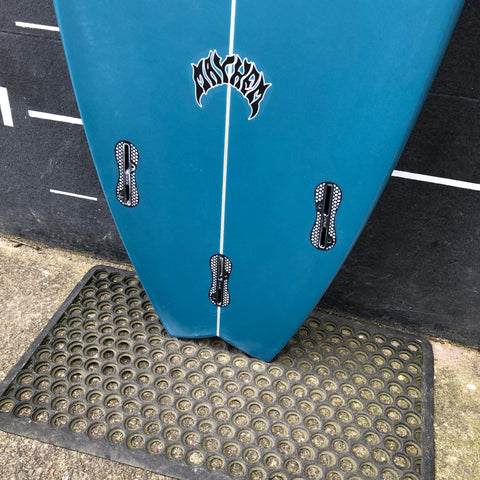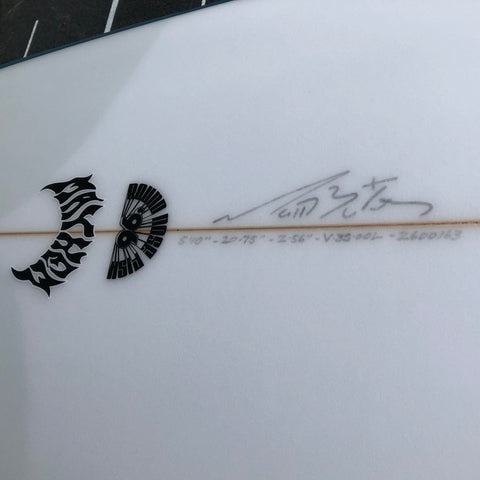


"RNF '96" PU FCS2 - 5'10" Blue
Pickup currently unavailable
5'10" x 20.75" x 2.56" - 35 Ltrs
The RNF-’96 is based with reverence, but not 100% compliance, to original “fish” we developed for Chris Ward and Cory Lopez in the year leading up to the 1997 seminal surf film 5’5” x 19 1/4”.
I’ve always felt the key difference between our RNF and the majority of others, from the 90’s and beyond, is the fact that our outline was always more based off of MR inspired, high performance, competitive minded, twin fins of the late 70’s/early 80’s. Relatively pulled in tails, developed through trial and error, for maximum performance and control…not just in small surf, but in all size and shape of waves.
Plainly put, most fishes since this time were predominately influenced by kneeboards. Inspired from early 70’s style, Lis inspired, wide tail, parallel outline kneeboards that transitioned well to stand up surfing in small waves, but have battled to come near peak performance of modern shortboards ever since. Our fish was always about performance, not just a crutch to go fast on in small surf.
For the sake of better surfboards, we’ve taken a touch of liberty. Based off the past 25 years of board building, we tried to create a consistent (and dare say better) surfboard, faithfully based off, but not necessarily exacting to the varied RNF of 1996. With diligent testing being done by many of our top team, including Kolohe, Coco, Ian Crane, Crosby Cola and other “guests” (and even pedestrian testing by myself) in the last few months of 2020, we are very confident that the RNF-’96 will perform at and above expectations, as an all-around, rip-able fun machine, for a wide level of surfers.
FEATURES
- Rocker curves: Remain engrained to the original proven curves.
- Outline curves: Both nose and tail were usually the same width at 12” and remain true, but with more precision, including added curve and width around 6” from the tail. One “secret” about the original’s success was that, unlike most all other “fish” the tail width on ours was closer to that of a typical HP Shortboard. This allows much more control off the tail than typical fish designs.
- Bottom Contours: The classic single concave to double concave, accelerating vee combination are defining design elements and hold true to adherence.
- The Thickness Flow, Deckline, Rails, and Tail Foil: They were all over the map in those rudimentary hand shape days. Each board was different, with most of them having noticeably different curves and thickness from one rail to the other.
- In re-creating these boards, which one is correct? In the end, I went with gut feeling on what would work best.
Free UK wide delivery is available on most products (excluding surfboards) on orders over £100. Orders under that value will be charged at £5 flat fee. Delivery usually takes 2-5 working days. International delivery times may vary. We offer 30 day returns in line with our returns policy.
If you have any questions, do not hesitate to give us a call or message us.
UNSUNGHERO LTD
Be prepared for the coastal life.


